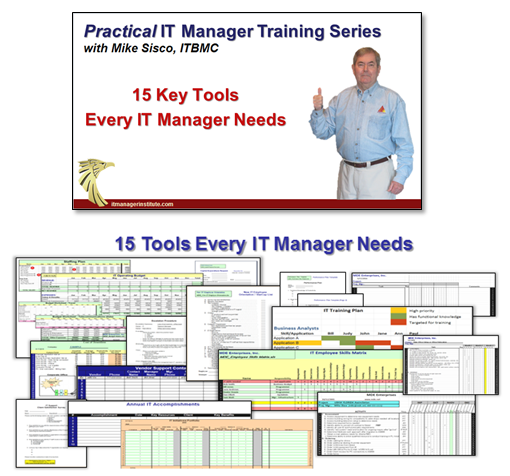 Delivering projects successfully creates IT credibility. Project failure causes you and your IT organization to lose credibility.
Delivering projects successfully creates IT credibility. Project failure causes you and your IT organization to lose credibility.
You must establish credibility to achieve IT success!
So, if project success is so critical to your success, what do you need to insure project success?
Well, it’s a little more than simply delivering a project successfully, , , there are other things to consider.
There are three key components to get the credibility you need. I’ll outline them for you in this article and we will follow-up with articles that dive into each to give you the substance you need.
3 Key components in managing projects successfully
First, you must be able to build an appropriate project schedule and manage a project to deliver it on time, within budget and meet your client’s expectations. To do this, you need a project management methodology and a few simple tools.
There are dozens of project management methodologies and thousands of tools and templates, even PM certifications to help you schedule and manage projects.
I use a simple spreadsheet to develop most of my project schedules unless a company requires me to use something like Microsoft Project. The tools are not nearly as important as how you go about the process of managing projects. I’ll show you my process in the next ITLever post.
Second, you need to communicate the status of active projects. At any given time, your IT organization will have several projects underway. Your ability to communicate the status and key issues associated with each project will help you deliver projects successfully as well as contribute to your credibility.
 Recently, I provided management consulting services for an organization. When I got there they were in the midst of running many projects. I could tell there were a lot of projects underway or in the stages of getting started, , , but there was nothing in place so we could see what was going on. In fact, we couldn’t tell how many projects we had.
Recently, I provided management consulting services for an organization. When I got there they were in the midst of running many projects. I could tell there were a lot of projects underway or in the stages of getting started, , , but there was nothing in place so we could see what was going on. In fact, we couldn’t tell how many projects we had.
It’s sort of like driving blindfolded!
Understanding the importance of communicating project status effectively, I quickly developed a simple monthly report that showed the status and key issues of each project.
I’ll give you all the details in a future post in this PM series.
Third, you need to demonstrate your organization’s project success rate and the benefits derived from your efforts.
This is key. Your clients (senior managers, department managers and their employees) have short term memory, , , or no memory at all. They quickly forget what you and the IT organization have done for them.
You must keep a positive message of “IT value” in front of your clients. Otherwise, they don’t know what you are accomplishing for them or they quickly forget.
Again, I use a simple spreadsheet to track IT projects and to show the track record of our project success. In this simple tool, you will show how effective you are in delivering projects on time, within budget, and meeting client expectations, , , plus the benefits that were achieved.
I’ll talk more on this in the 3rd post to follow this one.
Summary
There will be three posts written this week that explains each of these three important components of gaining IT credibility with project success. In the posts, I’ll explain what you need to do and provide tools or templates to help you make it happen.
The additional articles follow this post or can be located at the links below:
Project success is path to IT credibility – Step 1
Project success is path to IT credibility – Step 2
Project success is path to IT credibility – Step 3
 More details of the entire project management process and customizable tools I use are available in my book, IT Project Management: a practical approach
More details of the entire project management process and customizable tools I use are available in my book, IT Project Management: a practical approach




















